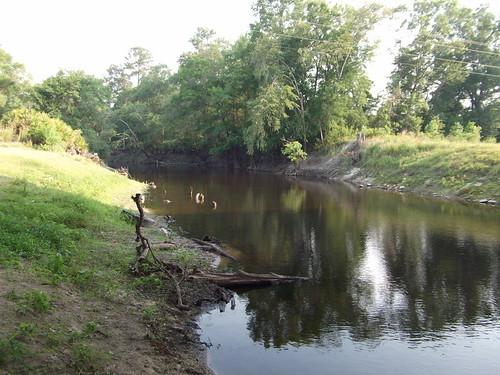Look a hundred feet farther downstream: Continue reading
Tag Archives: Sprawl
Meanwhile in Dublin and Laurens County, Georgia
 Jerome Tucker
mentioned that it was
Willie Paulk who enticed MAGE SOLAR
to Dublin and Laurens County, Georgia.
She’s
president of the Dublin Laurens County Chamber of Commerce.
Here’s
a writeup in GeorgiaTrend
about what’s going on there.
Jerome Tucker
mentioned that it was
Willie Paulk who enticed MAGE SOLAR
to Dublin and Laurens County, Georgia.
She’s
president of the Dublin Laurens County Chamber of Commerce.
Here’s
a writeup in GeorgiaTrend
about what’s going on there.
Hm, instead of taking out $15 million in bonds to be paid back by the taxpayers, the community around Dublin joined together and made available just as much money: Continue reading
Urban growth boundary –Portland
Local governments must ensure balanced growth, as sprawling residential growth is a certain ticket to fiscal ruin*Here’s a place that does something about it: Portland, Oregon.
* Or at least big tax increases.
Thanks to Matthew Richard for pointing out this documentary.
As the documentary says, the key to Portland’s way is: Continue reading
Communities, not Cul de sacs
 Update: Trees make streets safer and
Fixing a perfect storm of bad planning and design.
Update: Trees make streets safer and
Fixing a perfect storm of bad planning and design.
Eric M. Weiss writes in the Washington Post on 22 March 2009 about In Va., Vision of Suburbia at a Crossroads: Targeting Cul-de-Sacs, Rules Now Require Through Streets in New Subdivisions
The state has decided that all new subdivisions must have through streets linking them with neighboring subdivisions, schools and shopping areas. State officials say the new regulations will improve safety and accessibility and save money: No more single entrances and exits onto clogged secondary roads. Quicker responses by emergency vehicles. Lower road maintenance costs for governments.Banning cul-de-sacs was one of the New York Times Magazine’s 9th Annual Year in Ideas, because it’s safer and less expensive: Continue reading
Sprawl to ruin, or dense with green space for quality of life
 Jeffrey H. Dorfman,
Professor, Dept. of Agricultural & Applied Economics,
The University of Georgia:
Jeffrey H. Dorfman,
Professor, Dept. of Agricultural & Applied Economics,
The University of Georgia:
Local governments must ensure balanced growth, as sprawling residential growth is a certain ticket to fiscal ruin*See The Economics of Growth, Sprawl and Land Use Decisions.
* Or at least big tax increases.
Note and jobs, not just people: jobs so the people can work and afford the houses they live in.
- Green spaces increase property values of surrounding land
- Green and open spaces can provide environmental amenities for free
- If green spaces contribute to quality of life, you attract people and jobs to community
But this doesn’t mean exurban subdivisions with big yards: Continue reading
Impervious cover increase, Lowndes County
Where’s all this change coming from and going to?


The dark green is labeled “Evergreen Forest” and decreased from 31.81% in 1991 to 26.47% in 2005. Meanwhile, the light pink labeled “Low Intensity Urban” went from 5.37% to 8.57%. Other changes include the red “High Intensity Urban” slice going from 1.15% to 1.98%. But the biggest change is piney woods being paved over for urban sprawl.
Could this have some effect on flooding?
-jsq
John S. Quarterman
Where and why flooding happens
 Michael E. Kanell and Ty Tagami, writing in the AJC about
More than 16,000 flood-related claims filed in Atlanta area,
quote Robert Klein, professor of risk and insurance at Georgia State University:
Michael E. Kanell and Ty Tagami, writing in the AJC about
More than 16,000 flood-related claims filed in Atlanta area,
quote Robert Klein, professor of risk and insurance at Georgia State University:
Moreover, the maps that set out those high-risk areas are “woefully inadequate,” he said.And maybe somebody should do something about that continued development and sprawl.Maps should be recalibrated to account for continued development and sprawl, he said: destruction of trees, paving of roads and parking lots, addition of new homes to older areas and landscaping all change the way water drains — or doesn’t drain.
